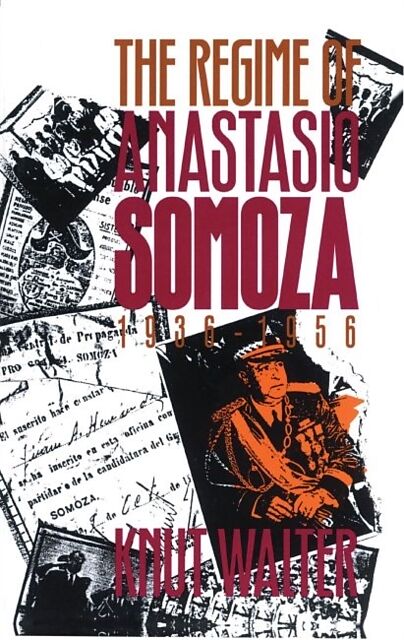The Regime of Anastasio Somoza, 1936-1956
Einband:
Kartonierter Einband
EAN:
9780807844274
Untertitel:
Englisch
Genre:
Geschichte
Autor:
Knut Walter
Herausgeber:
The University of North Carolina Press
Anzahl Seiten:
324
Erscheinungsdatum:
01.11.1993
ISBN:
0807844276
Informationen zum Autor Knut Walter is professor of history at Universidad Centroamericana in San Salvador. Klappentext To many observers! Anastasio Somoza! who ruled Nicaragua from 1936 until his assassination in 1956! personified the worst features of a dictator. While not dismissing these characteristics! Knut Walter argues that the regime was in fact more notable for its achievement of stability! economic growth! and state building than for its personalistic and dictatorial features. Using a wide range of sources in Nicaraguan archives! Walter focuses on institutional and structural developments to explain how Somoza gained and consolidated power. According to Walter! Somoza preferred to resolve conflicts by political means rather than by outright coercion. Specifically! he built his government on agreements negotiated with the country's principal political actors! labor groups! and business organizations. Nicaragua's two traditional parties! one conservative and the other liberal! were included in elections! thus giving the appearance of political pluralism. Partly as a result! the opposition was forced to become increasingly radical! says Walter; eventually! in 1979! Nicaragua produced the only successful revolution in Central America and the first in all of Latin America since Cuba's.
Autorentext
Knut Walter is professor of history at Universidad Centroamericana in San Salvador.
Klappentext
To many observers, Anastasio Somoza, who ruled Nicaragua from 1936 until his assassination in 1956, personified the worst features of a dictator. While not dismissing these characteristics, Knut Walter argues that the regime was in fact more notable for its achievement of stability, economic growth, and state building than for its personalistic and dictatorial features. Using a wide range of sources in Nicaraguan archives, Walter focuses on institutional and structural developments to explain how Somoza gained and consolidated power. According to Walter, Somoza preferred to resolve conflicts by political means rather than by outright coercion. Specifically, he built his government on agreements negotiated with the country's principal political actors, labor groups, and business organizations. Nicaragua's two traditional parties, one conservative and the other liberal, were included in elections, thus giving the appearance of political pluralism. Partly as a result, the opposition was forced to become increasingly radical, says Walter; eventually, in 1979, Nicaragua produced the only successful revolution in Central America and the first in all of Latin America since Cuba's.

Leider konnten wir für diesen Artikel keine Preise ermitteln ...
billigbuch.ch sucht jetzt für Sie die besten Angebote ...
Die aktuellen Verkaufspreise von 6 Onlineshops werden in Realtime abgefragt.
Sie können das gewünschte Produkt anschliessend direkt beim Anbieter Ihrer Wahl bestellen.
Loading...
Die aktuellen Verkaufspreise von 6 Onlineshops werden in Realtime abgefragt.
Sie können das gewünschte Produkt anschliessend direkt beim Anbieter Ihrer Wahl bestellen.
| # | Onlineshop | Preis CHF | Versand CHF | Total CHF | ||
|---|---|---|---|---|---|---|
| 1 | Seller | 0.00 | 0.00 | 0.00 |
